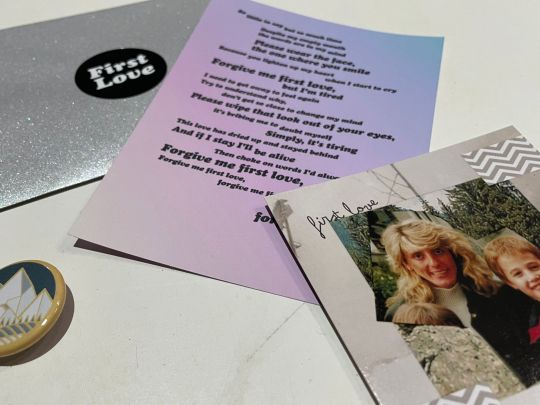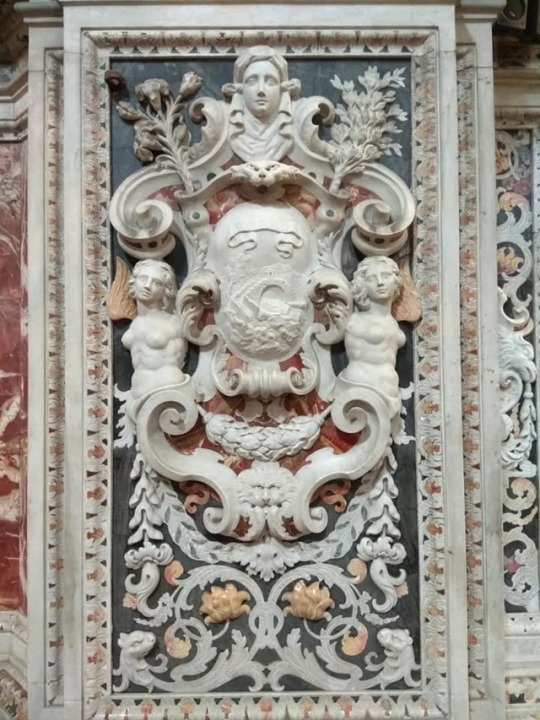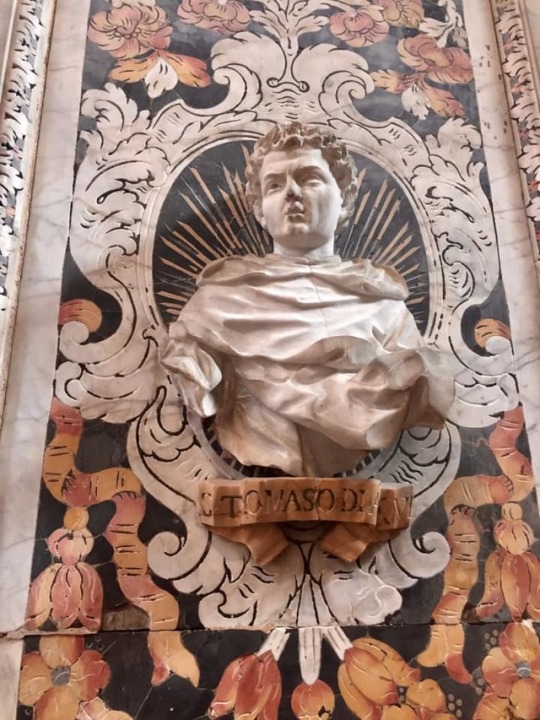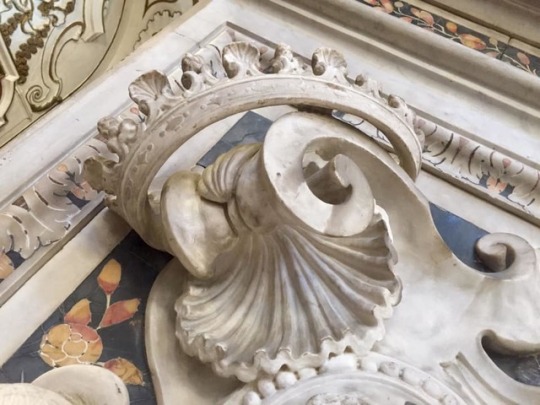#fantasia arabesques
Text
I noticed that the tracks of Order of Ecclesia were named very differently from Japanese to English, most famously the boss themes that reference past games in the series. Some of the original names are quite interesting: there are plenty of reference to obscure musical instruments and compositional techniques.
An Empty Tome: Twilight Stigmata (黄昏の聖痕)
Oncoming Dread: Testudo for the Repose of a Soul (鎮魂テストゥード)
Heroic Dawning: Dicantos of Daybreak (黎明ディカントス)
I honestly don't know what "dicantos" means, or if indeed it's the correct spelling.
Ecclesia: Ecclesia - Introduction (エクレシア・序章)
Vanishing: Elegance -Dash- (雅-疾走-)
Sapphire Elegy: Elegy of a Crimson Pearl (紅珠エレジー)
Destiny's Stage: Harp of Beginning (萌芽の竪琴)
Chapel Hidden in Smoke: Tormented Refuge (燻しの隠れ家)
the verb 燻す means both "to smoke something" (like food, not like tobacco) and "to oxidize", but according to Wiktionary and Goo, it can also mean "to torment".
Serenade of the Hearth: Serenade of the Mallow (葵セレナーデ)
Yamane called this track "Serenade of Healing" in her piano cover
Symphony of Battle: Rhapsody of the Fighting Spirit (闘魂狂詩曲)
A Clashing of Waves: Sea Route Cut Through Waves (波断の海路)
断 can mean anything from "cutting" to "decision" to "refusal".
Rhapsody of the Forsaken: Rhapsody of Indigo Lament (藍愁ラプソディ)
Interestingly, in Symphony of Battle "rhapsody" is written in kanji, while here it's written in English through katakana.
Jaws of a Scorched Earth: Giant Cliff of Scorched Earth (焦土の大巌)
Unholy Vespers: Cathedral of Holy Husks (聖骸カテドラル)
Wandering the Crystal Blue: Wandering into the Deep Blue (紺碧の彷徨)
Dissonant Courage: Distorted Black Shivers (歪みの黒凛)
Edge of the Sky: Azure Virginal (瑠璃色ヴァージナル)
Tragedy's Pulse: Beat of the Wild String (荒絃鼓動)
荒 can mean "wild" or "desolate", 絃 is the string of a bowed instrument, and 鼓動 means "beat" in the sense of palpitation
Hard Won Nobility: Virtuous Variation (高潔なる変奏曲)
Trace of Rage: Trace of Rage - Conversation (激昂の軌跡~会話~)
激昂 could also be "excitement", or generally strong emotions
Sorrow's Distortion: Binding Spell of Sorrow (悲哀の呪縛)
Lament to the Master: Trace of Rage (激昂の軌跡)
In Japanese, the connection between this track and the one above, that plays when Shanoa is communicating with Albus's soul, is more obvious.
Stones Hold a Grudge: Old Grudge of a Feudal Castle (宿怨の居城)
Welcome to Legend: Waltz of the Evening Moon (宵月のワルツ)
Passing into the Night: Fantasia of a Lovely Dream (麗夢幻想曲)
Chamber of Ruin: Expectation of Madness (狂気の思惑)
The Colossus: Gargantuan (ガルガンチュア)
Order of the Demon: Evil Symphonic Poem of Silk Gauze (繻紗魔交響詩)
Rituals: Ricercare (リチェルカーレ)
Consummation: Time of Demise (終焉のとき)
Armory Arabesque: Arabesque Canon (唐草カノン)
#castlevania#order of ecclesia#ricercare got me in the feels#i am sure it's intentional#albus is a researcher after all ;A;
22 notes
·
View notes
Text
Here are all the songs Nightwish have never played live (by Metal Hammer)
Symphonic metal giants Nightwish have recorded around 117 songs, with only 34 never seeing the light of day

If you’ve ever seen the Finnish symphonic metal giants Nightwish at one of their 951 gigs (at the time of penning this list), there’s a good chance you’ll have heard them play Nemo, Wish I Had an Angel and Dark Chest of Wonders. The band’s top three most-played songs all come from the 2005 album Once, but what are they not playing?
With the help of tour Bible and gig reviewer’s best friend, Setlist.fm, we found 34 tracks from the band that have never been played live. For context, there are around 117 recorded songs in their discography; “around”, because their later albums have frequently been accompanied by a second disc of purely orchestral versions, and because Tuomas Holopainen has a penchant for composing songs that go over the 25-minute mark and consist of multiple movements.
Some of these, like the Lappi (Lapland) quadrilogy, are treated as four separate tracks here per the album’s tracklisting, whereas songs like The Greatest Show On Earth are treated as one long song. Cover songs that are B-sides such as Where Were You Last Night, and the instrumental Imaginaerum soundtrack album, haven’t been included, nor has the second disc of Human. :||: Nature.
Now that we’ve explained our highly sophisticated scientific methodology, below are the songs that have never seen the stage lights. Is your favourite Nightwish song on here? Get ready to strap in, and nerd out…
Angels Fall First (1997)
Besides the recently released Human. :||: Nature, the band’s debut album is the one they’ve delved into the least when it comes to live shows: the aforementioned Lappi (Lapland) and the largely acoustic Nightwish demo have all been skipped over, as have the mellow Return to the Sea and the folky Nymphomaniac Fantasia.
Oceanborn (1998)
The release of Oceanborn saw the band start to tour outside of Finland, and with the 1998 record full of tracks like Sacrament of Wilderness and Passion & The Opera, you could forgive them for overlooking The Riddler and Nightquest. Though if you ask us, we might swap Walking In The Air for either.
Wishmaster (2000)
From the band’s second-most played record, there are just two songs they’ve consistently skipped over: the mournful ballad Two for Tragedy, and the histrionic Bare Grace Misery, a song with a delightfully melodramatic chorus that frankly deserves at least one live outing.
Century Child (2002)
2002’s Century Child and the addition of Marko Hietala’s powerful voice ushered in a new era for Nightwish and brought what would become a new setlist staple in the form of the stunning Ever Dream. It’s not surprising they favoured other songs over the slow, plodding Forever Yours and Ocean Soul, but we reckon that the sultry Feel For You should have its day in the sun at least once. Speaking of which…
Once (2004)
Once is big for many reasons: their most played album, their last with Tarja Turunen, and the one that gained them a significant new following outside of Europe; of all its songs, only one has never been played, and it’s the guitar-driven Dead Gardens.
Dark Passion Play (2007)
The Dark Passion Play tour was, and still is, Nightwish’s biggest tour to date, which is why it comes as little surprise that they’ve played nearly every song on the record with the exception of the sweet mid-tempo For The Heart I Once Had and the vitriolic Master Passion Greed.
With the latter widely understood to be a thinly-veiled jab at Tarja’s husband, perhaps the band felt that playing the song live would be taking things a bit too far, or that those bitter feelings are best left in the past.
Imaginaerum (2011)
With a feature film to promote and another massive world tour, only the instrumental Arabesque and the gentle folky ballad Turn Loose The Mermaids were missed off the setlist for the Imaginaerum shows. The latter, featuring a gorgeous violin solo by Pekka Kuusisto, definitely deserves to be heard in a live setting.
Endless Forms Most Beautiful (2015)
Enter Floor Jansen to take Nightwish into their Attenborough-metal era. Nothing says “I’ve got a National Geographic subscription” like writing an instrumental track called The Eyes of Sharbat Gula as tribute to the publication’s most iconic cover photograph, featuring the piercing green-eyed stare of a young Afghan woman. Of course, instrumentals are tricky to do justice live, so we’ll let them off for not giving this one an airing.
Human. :||: Nature (2020)
They band are only now touring their most recent record two-and-a-bit years after its release, thanks to a little something we’d probably rather not think about anymore, but so far they haven’t shown any love to the album opener Music (except as an intro played over the PA), Procession or closing track Endlessness. Watch this space.
Deeper Cuts
Like any band with as many albums and singles as Nightwish have, they bring out the odd B-side from time to time. Personally, we’d love to hear Floor have a stab at the ludicrous The Heart Asks Pleasure First, a sweeping, cinematic waltz from with some eye-wateringly high notes and beautiful violin outro.
They’ve also never played Away, Lagoon, Live to Tell The Tale, Once Upon a Troubadour, Sagan, Sleepwalker, The Wayfarer or White Night Fantasy. While there’s probably little chance of them playing Erämaan Viimeinen unless Floor really knuckles down in her language studies, perhaps Tuomas’ wife, Finnish singer Johanna Kurkela, could join in for the Dark Passion Play-era jig.
66 notes
·
View notes
Photo

Charles Mingus :: Mingus Plays Piano
The album opens with Charles Mingus sputtering a percussive motif with one hand while the other riffs out an arabesque fantasia. There’s a duality present here, a tension of opposites. […]
41 notes
·
View notes
Text
“Come puoi raccontare a qualcuno del tuo primo amore come se fosse la cosa più bella che ci sia stata?”
La memoria di un atleta messa al servizio di un Marco D’Agostin adulto e bambino che spera di vincere, almeno per una volta.
La competizione personale, la fame e le grida di chi è intorno che sprona a non mollare, sono alcune delle componenti abbandonate per servire gli occhi di spettatori altrettanto affamati ma che, senza intervenire direttamente, assistono al giorno più glorioso della vita di Marco: la medaglia d’oro di Stefania Belmondo.
Con un po’ di immaginazione arriva la neve a Catania, i movimenti degli sciatori diventano passi di danza e la gloria illumina finalmente il performer.

“Come puoi raccontare a qualcuno del tuo primo amore come se fosse la cosa più bella che ci sia stata?”
First Love il titolo del brano di Adele cantato in playback in apertura dello spettacolo è il concetto più coinciso per racchiudere il primo innamoramento che l’artista vuole raccontare: lo sci.
Come premessa, il promettente sportivo (bambino) ha lasciato a chi ha voluto seguire il racconto del suo più grande sogno, una busta da aprir «prima che si alzi il “sipario”». Una spilla, un adesivo, il testo del brano e la foto con il suo mito, la Belmondo, dopo una gara alla quale era arrivato diciannovesimo, ma era la prima volta che la incontrava!



D'Agostin si serve delle memorie evocative di voce e corpo per parlare come un telecronista e danzare come uno sciatore. Vi è una correlazione diretta tra le due componenti così è come se stessimo guardando l’oro di Stefania Belmondo nei 15km a tecnica libera durante le Olimpiadi di Salt Lake City 2002 e sentendo Franco Bragagna affannarsi per il troppo coinvolgimento emotivo.
Il doppio, il lungo e, in caso di riposo, l’uovo, da movimenti fatti con gli sci ai piedi e i bastoncini alle mani diventano le piroquettes, i fouettés e le arabesque di un danzatore che, come in tenera età saliva le scale immaginando la montagna sotto di se, danza la memoria dell’atleta.
Strizza un po’ gli occhi ed è solo fantasia… ma l’eccitazione, la pelle d’oca e l’esaurimento delle forze in campo è reale.
Ciò che ha mosso il coreografo/interprete a mettere in scena la pace fatta con l’esperienza poco gratificante dello sport è proprio l’interrogativo: come sta un danzatore prima che la gara cominci? O ancora, come si sente un atleta prima che il pubblico si accomodi in platea?
In uno spazio metaforicamente innevato la performance procede fino a quando come un martellante ritornello, gli incitamenti per l’olimpionica campionessa mutano in cori per Marco che non deve mollare, che non può mollare. Le luci si abbassano e un’atmosfera malinconica e cupa scende in sala lasciandoci affacciare su una verità estremamente personale: il fardello dei desideri altrui.
Riprende la telecronaca; ormai mancano gli ultimi, pochi chilometri. La sala si riaccende, la voce si alza e la coreografia si affatica ma non si cede. Stefania/Marco deve arrivare sul podio. Una scalata ancora, i bastoncini scavano nella neve e le gambe sembrano cedere ma il tutto per l’oro…
Ancora pochi metri e… MEDAGLIA D’ORO PER STEFANIA BELMONDO!
CHE BELLO!
Ancora pochi passi e… MEDAGLIA D’ORO PER MARCO D’AGOSTIN!
CHE BELLO!

Con questa performance Marco ha dimostrato che il suo primo amore ha avuto ragione di esistere, e lo ha fatto sussurrando ai presenti - con la sua nostalgica memoria - un grido di speranza, riconciliazione e forza.
Una neve non più immaginaria conclude il sogno e a noi non resta altro che ripetere in coro
che bello!
che bello!
che bello!
a cura di: Teresa De Angelis
#scenariopubblico#catania#danza contemporanea#teatro#danza#recensione#marcod'agostin#firstlove#performance
0 notes
Text
Make a Fantasia 2025 and make an animated short of a scene from Finnegans Wake . Have it set to Arabesque No. 2.
1 note
·
View note
Photo

ESCOLA ARTÍSTICA DE MÚSICA DO CONSERVATÓRIO NACIONAL Direção: Lilian Kopke 19 DE NOVEMBRO DE 2022, 21h30 PALÁCIO NACIONAL DA AJUDA SALA DOS SERENINS PEQUENO TRATADO SOBRE O AMOR (MENA) VOZ, PIANO, VÍDEO, PINTURA Autor e Leitor: Pedro Guilherme-Moreira Pianista: Maja Stojanovska Leitora: Maria Kopke Apoio técnico: Micaela Marcedo Introdução Maria Kopke Sobre o amor Pedro Guilherme-Moreira Prelúdio N.1 em D6 Maior 1° Vol, "O cravo bem temperado" - J. S. Bach Percurso de um amor entre uma rapariga francesa e um rapaz inglês Pedro Guilherme-Moreira Sonata K331 em Lá Maior W. A. Mozart Entrada em casa da artista (one-take) Prelúdio op.28 N4 em Mi menor F. Chopin Reencontro Pedro Guilherme-Moreira Valsa opus 70 n° 2 F. Chopin A rapariga e o rapaz 40 anos depois Pedro Guilherme-Moreira Toccata para piano (fragmento) - G. Kolarovsky, "Sonata quase una Fantasia"op.27, N2 - Andante sostenuto - Beethoven Final de uma história de amor e morte Maria Kopke O Castelo Medieval (Andante molto cantabile e com Dolores) "Quadros de uma exposição", M. Mussorgsky Requiem Maria Kopke e Pedro Guilherme- Moreira Nocturno Opus post. em dó# menor, F. Chopin Requiem, parte 2 Pedro Guilherme- Moreira Sometimes | feel like a motherless child Jazmine Sullivan: os despojos Clair de lune de Suite bergamesque - C. Debussy, Requiem, Parte 3 Pedro Guilherme- Moreira Anunciação da morte, existencialismo e Álvaro Siza Nocturno Opus 9 n° 2 em Mi Bemol Maior F. Chopin Requiem, parte 4 Pedro Guilherme- Moreira Arabesque C. Debussy Creep Radiohead: sou um canalha Fantasia em Ré Menor K397 W. A. Mozart Final: Mãe em verso branco: a redação política no facebook e a poesia Pedro Guilherme- Moreira Sonata K333 Allegro, "Linz", W. A. Mozart Encerramento com tertúlia / Conversa, entre executantes e público Fotografia: MAURILIO ARAUJO @maurilioaraujoarte MATIZ FINE ARTS BUREAU @matizfineartsbureau (em Palácio Nacional da Ajuda) https://www.instagram.com/p/ClLuRGnNfaD/?igshid=NGJjMDIxMWI=
0 notes
Text
I love Beeftink's music so much, there is something fresh and mesmerizing in each of his pieces that just makes you want to press the repeat button and it gets better each time !
#herman beeftink#fantasia arabesques#this is his most recent piece on spotify and boy i am obsessed !!#i am so in love with his pieces for flute in general because it's the instrument i play but also because they sound so cool and exciting#he's really a genius in my opinion#i love love love his work#Spotify
0 notes
Text
pieces of music i’ve listened to that remind me of dr:thh characters
my current media brainrot (dr) + a fervent interest of mine (classical music and soundtracks) = this post
so this is just me having fun and combining the 2 things i like to engage in. these choices are just based off how i interpret the characters or like things about them i recalled on a whim haha. i tried to make sure every character had 2 pieces but given my taste in music, some were easier to find than others... this was all in good fun tho so i’m pretty satisfied!!
if anyone wants to know why i chose certain pieces, you’re free to ask me and i’ll be happy to respond (i’m just a nerd who likes music and talking about it lol)
and also, spoilers for the game!! (just in case)
UPDATE: fixed Leon’s Canon in D piece to Symphony No. 9 bc I had the wrong title (oops)
Aoi Asahina
昼下がり/Early Afternoon (from Land of the Lustrous) - Yoshiaki Fujisawa [youtube/spotify]
Osono’s Request (from Kiki’s Delivery Service) - Joe Hisaishi [youtube/spotify]
Byakuya Togami
Gnossienne: No. 1 - Erik Satie [youtube/spotify]
Nocturne Op 9 No. 2 in E-flat Major - Frederic Chopin [youtube/spotify]
Celestia Ludenberg
Violin Concerto in E Minor: I. Allegro molto appassionato - Felix Mendelssohn [youtube/spotify]
The Second Waltz - Dmitri Shostakovich [youtube/spotify]
Chihiro Fujisaki
On a Clear Day (from Kiki’s Delivery Service) - Joe Hisaishi [youtube/spotify]
note: youtube link’s video includes On a Clear Day and Town with an Ocean View from Kiki’s Delivery Service
フォスフォフィライト/Phosphophylite (from Land of the Lustrous) - Yoshiaki Fujisawa [youtube/spotify]
Hifumi Yamada
The Blue Danube - Johann Strauss II [youtube/spotify]
Les Toreadors (from Carmen Suite) - Georges Bizet [youtube/spotify]
it was just really hard to find pieces that vibed with him for me /: maybe i just need to listen to more but this is all i have for him rn
Junko Enoshima
Etude No. 11 in A Minor Op 25 - Frederic Chopin [youtube/spotify]
Bacchanale (from Samson and Dalila) - Camille Saint-Saens [youtube/spotify]
Kiyotaka Ishimaru
1st Suite in E-Flat Major: III. March - Gustav Holst [youtube/spotify]
Carnival Overture Op. 92 - Antonin Dvorak [youtube/spotify]
Kyoko Kirigiri
Carnival of the Animals: Aquarium - Camille Saint-Saens [youtube/spotify]
Gymnopedie No. 1 - Erik Satie [youtube/spotify]
Leon Kuwata
Symphony No. 9: IV. Presto (Ode to Joy) - Ludwig van Beethoven [youtube/spotify]
omg i have to explain myself for this one: some classical pieces are so well known that artists would sample the chord progression used on that piece in their songs, such is the case of Ode to Joy. I chose this piece in particular bc Mr. Brightside by The Killers samples from this piece (as demonstrated by this YT video). Now i understand that they aren’t a punk band but that song’s vibe fit my vision of what kind of music Leon would’ve made so there ya go haha
1812 Overture - Peter Ilyich Tchaikovsky [youtube/spotify]
but only like the last 2-3 minutes of the overture reminded me of him
Makoto Naegi
2nd Suite in F Major: IV. Fantasia on the Dargason - Gustav Holst [youtube/spotify]
October - Eric Whitacare [youtube/spotify]
Mondo Owada
Ingenium (from My Hero Academia) - Yuki Hayashi [youtube]
3 Notes of Japan: III. Festival of Fire - Toshio Mashima [youtube/spotify]
Mukuro Ikusaba
Nobles of the Mystic Shrine - John P. Sousa [youtube/spotify]
The Voice of the Guns - Kenneth Alford [youtube/spotify]
Sakura Ogami
Aika (from Inuyasha OST 1) - Kaoru Wada [youtube/spotify]
Longing (from Inuyasha OST 1) - Kaoru Wada [youtube/spotify]
i couldn’t choose between the two so i included both; they’re both relatively the same anyway (in terms of musical theme)
3 Notes of Japan: I. Dance of the Cranes - Toshio Mashima [youtube/spotify]
Sayaka Maizono
Waltz of the Flowers (from The Nutcracker) - Peter Ilyich Tchaikovsky [youtube/spotify]
Pas de deux (from The Nutcracker) - Peter Ilyich Tchaikovsky [youtube/spotify]
Toko Fukawa / Genocider Syo
Arabesque No. 1 - Claude Debussy [youtube/spotify]
In the Hall of the Mountain King - Edvard Grieg [youtube/spotify]
Yasuhiro Hagakure
Rhapsody in Blue - George Gershwin [youtube/spotify]
Ladyfingers - Herb Alpert & The Tijuana Brass [youtube/spotify]
#ddumpling screams into the abyss#danganronpa#danganronpa trigger happy havoc#dr1#aoi asahina#byakuya togami#celestia ludenberg#chihiro fujisaki#hifumi yamada#junko enoshima#kiyotaka ishimaru#kyoko kirigiri#leon kuwata#makoto naegi#mondo owada#mondo oowada#mukuro ikusaba#sakura ogami#sakura oogami#sayaka maizono#toko fukawa#yasuhiro hagakure#ugh this shit took me a week to finish; i guess it's a labor of love#finally got the guts to post it#you did good bud#pats self on the back#its also 4am rn i needa sleep
29 notes
·
View notes
Photo










Palermo - Santa Caterina D’Alessandria.
Ti avevo parlato di questa chiesa e dei suoi preziosi arredi. Sono voluto tornare a vederla, per perdermi nei suoi infiniti marmi barocchi, nei suoi giochi dove secoli fà sconosciuti e famosi artigiani hanno creato una bellezza esuberante, chiassosa, travolgente e dominante. La chiesa appare fin troppo ricca, fin troppo dispersiva e disorientante. Ti perdi seguendo fiori, mostri, blasoni nobiliari, santi e putti. E’ il clamore della scultura che ti assale e travolge, che subisci sorpreso e impotente. Non esiste il pieno e il vuoto, tutto è un arabesco, una rigogliosa giungla di marmo in cui ti perdi, una galassia di marmi multicolori, di statue e di immensa ricchezza. Non la ricchezza dei marmi o dei candelabri d’argento o degli angeli con le ali d’argento, ma la ricchezza della fantasia degli artisti, il rigoglioso instancabile creare in cui la tua mente, vuota e disorientata, si perde e si ritrova.
I told you about this church and its precious furnishings. I wanted to go back to see it, to lose myself in its endless Baroque marbles, in its games where centuries ago unknown and famous artisans created an exuberant, noisy, overwhelming and dominant beauty. The church appears too rich, too dispersive and confusing. You get lost following flowers, monsters, noble coats of arms, saints and cherubs. It is the clamor of the sculpture that assails and overwhelms you, which you suffer surprised and powerless. There is no fullness and emptiness, everything is an arabesque, a luxuriant marble jungle in which you get lost, a galaxy of multicolored marbles, statues and immense wealth. Not the richness of marbles or silver candlesticks or angels with silver wings. The richness of the imagination of the artists, the thriving indefatigable create in which your mind, empty and disoriented, lost and finds itself.
66 notes
·
View notes
Note
about Ribon, what works do you really recommend reading (besides tokimeki and ai yazawa)? i wanna know more about magazines, cause when i read manga i don't pay attention to what magazines they're serialized.
I’ll try to list some classics as well as titles I personally enjoy!
Himitsu no Akko-chan (this is actually super cute if you’re interested in 60s shojo)
Maho-tsukai Sally (ditto)
Viva! Volleyball (one of the early shojo sports-konjo series)
Arabesque (Yamagishi Ryoko ballet manga, although it’s not my favorite Yamagishi manga)
Designer, Yukan Kurabu, Onna-tomodachi (my favorite Ichijo Yukari)
France-mado dayori, Hanaburanko yurete..., Tenshi mo yume miru rosoku-ya (the Otome-tique artists)
Hoshi no hitomi no silhouette, Mimi o sumaseba, Gin’iro no harmony (I like Gin’iro best but the other two are more famous)
Chibimaruko-chan vol. 1-5
Chime (early Mizusawa Megumi)
Heroine ni naritai (the other Ikeno manga I love)
Kimi no koto suki nanda (or another Tanikawa Fumiko collection)
Koitsura 100% densetsu (my favorite Okada Amin)
Neko Neko Fantasia
Circus Wonder (or another Kusunoki Kei horror collection)
Anata to scandal
Kodomo no omocha
Passion Girls
High Score
Ultra Maniac (which I like best of Yoshizumi Wataru’s work)
There’s a ton of Ribon manga that are super fun, though! I don’t think you’ll go wrong with 80s and 90s Ribon manga, especially if you like fun romance shojo. :)
32 notes
·
View notes
Audio
Fuga in C-Moll / C-Minor, BWV 906
By Composer Johann Sebastian Bach - Igor Kipnis, harpsichord
The Complete Fantasias of Johann Sebastian Bach ℗ 2009 Arabesque Recordings
#fuga#fugue#bwv 906#j.s. bach#johann sebastian bach#german composers#baroque period#baroque music#audio#audio post
14 notes
·
View notes
Photo

Even a brave Croat
The young imaum of the village was also summoned, and made to understand that, unless his mother’s influence was employed to keep the peace, he should lose his place. Accordingly, the war stopped, but there were threats that the two persons most concerned with the erection of the wall would be stoned to death.
The threats were so serious that even a brave Croat, in the service of the proprietors of the enclosed ground, advised the superintendent of the works to avoid a road which would expose him to assault. “ I am an old man,” replied the latter, a Briton, “ it will not matter much if I am stoned to death.” “ But,” answered the Croat, “ will it not be a shame to be killed by women? ” It was an ungallant remark to make, in view of the spirit displayed by the women, yet a characteristic expression of that poor estimate of womanhood against which the weaker sex has still to contend in the East—the estimate which led Abimelech, long ago, when at the point of death by a blow from a woman’s hand, to beseech his armour-bearer to kill him, lest men should say “ a woman slew him.”
But the world moves, and Turkish women move with it The last generation has witnessed remarkable changes in their habits both in the capital and in other great cities of the Empire. For one thing, there has been a striking change in the matter of dress. The time was, when a Turkish woman brought vivid colouring into every scene she adorned. Her yashmak, enveloping head and face and neck in white gauze; her feredjd enfolding her form down to the feet in red, green, blue, pink, or any other hue she fancied; her yellow boots and yellow overshoes, worn like slippers, made her as gay and bright as a butterfly or a flower.
Women thus attired form
What wonderful pictures did groups of women thus attired form, as they squatted on a red rug spread on the green grass under the shade of cypresses or plane-trees, beside the Sweet Waters of Europe and the Heavenly Waters of Asia; or as they sat in long rows by the shores of the Bosporus to drink in the salt air, to watch the blue waters and the hurrying to and fro of boats and sails and steamers; or as they floated in a caique over the quiet sea. What a fantasia of colour they made as they went slowly past, seated in a long, narrow wagon (arabah), its high sides bright with punted flowers and gilded arabesque, under a scarlet awning edged with gold fringe, drawn by white oxen, over whose heads heavy red tassels, attached to rods fixed in the yoke, waved with every motion of the creeking wheels!
0 notes
Photo

Even a brave Croat
The young imaum of the village was also summoned, and made to understand that, unless his mother’s influence was employed to keep the peace, he should lose his place. Accordingly, the war stopped, but there were threats that the two persons most concerned with the erection of the wall would be stoned to death.
The threats were so serious that even a brave Croat, in the service of the proprietors of the enclosed ground, advised the superintendent of the works to avoid a road which would expose him to assault. “ I am an old man,” replied the latter, a Briton, “ it will not matter much if I am stoned to death.” “ But,” answered the Croat, “ will it not be a shame to be killed by women? ” It was an ungallant remark to make, in view of the spirit displayed by the women, yet a characteristic expression of that poor estimate of womanhood against which the weaker sex has still to contend in the East—the estimate which led Abimelech, long ago, when at the point of death by a blow from a woman’s hand, to beseech his armour-bearer to kill him, lest men should say “ a woman slew him.”
But the world moves, and Turkish women move with it The last generation has witnessed remarkable changes in their habits both in the capital and in other great cities of the Empire. For one thing, there has been a striking change in the matter of dress. The time was, when a Turkish woman brought vivid colouring into every scene she adorned. Her yashmak, enveloping head and face and neck in white gauze; her feredjd enfolding her form down to the feet in red, green, blue, pink, or any other hue she fancied; her yellow boots and yellow overshoes, worn like slippers, made her as gay and bright as a butterfly or a flower.
Women thus attired form
What wonderful pictures did groups of women thus attired form, as they squatted on a red rug spread on the green grass under the shade of cypresses or plane-trees, beside the Sweet Waters of Europe and the Heavenly Waters of Asia; or as they sat in long rows by the shores of the Bosporus to drink in the salt air, to watch the blue waters and the hurrying to and fro of boats and sails and steamers; or as they floated in a caique over the quiet sea. What a fantasia of colour they made as they went slowly past, seated in a long, narrow wagon (arabah), its high sides bright with punted flowers and gilded arabesque, under a scarlet awning edged with gold fringe, drawn by white oxen, over whose heads heavy red tassels, attached to rods fixed in the yoke, waved with every motion of the creeking wheels!
0 notes
Photo

Even a brave Croat
The young imaum of the village was also summoned, and made to understand that, unless his mother’s influence was employed to keep the peace, he should lose his place. Accordingly, the war stopped, but there were threats that the two persons most concerned with the erection of the wall would be stoned to death.
The threats were so serious that even a brave Croat, in the service of the proprietors of the enclosed ground, advised the superintendent of the works to avoid a road which would expose him to assault. “ I am an old man,” replied the latter, a Briton, “ it will not matter much if I am stoned to death.” “ But,” answered the Croat, “ will it not be a shame to be killed by women? ” It was an ungallant remark to make, in view of the spirit displayed by the women, yet a characteristic expression of that poor estimate of womanhood against which the weaker sex has still to contend in the East—the estimate which led Abimelech, long ago, when at the point of death by a blow from a woman’s hand, to beseech his armour-bearer to kill him, lest men should say “ a woman slew him.”
But the world moves, and Turkish women move with it The last generation has witnessed remarkable changes in their habits both in the capital and in other great cities of the Empire. For one thing, there has been a striking change in the matter of dress. The time was, when a Turkish woman brought vivid colouring into every scene she adorned. Her yashmak, enveloping head and face and neck in white gauze; her feredjd enfolding her form down to the feet in red, green, blue, pink, or any other hue she fancied; her yellow boots and yellow overshoes, worn like slippers, made her as gay and bright as a butterfly or a flower.
Women thus attired form
What wonderful pictures did groups of women thus attired form, as they squatted on a red rug spread on the green grass under the shade of cypresses or plane-trees, beside the Sweet Waters of Europe and the Heavenly Waters of Asia; or as they sat in long rows by the shores of the Bosporus to drink in the salt air, to watch the blue waters and the hurrying to and fro of boats and sails and steamers; or as they floated in a caique over the quiet sea. What a fantasia of colour they made as they went slowly past, seated in a long, narrow wagon (arabah), its high sides bright with punted flowers and gilded arabesque, under a scarlet awning edged with gold fringe, drawn by white oxen, over whose heads heavy red tassels, attached to rods fixed in the yoke, waved with every motion of the creeking wheels!
0 notes
Photo

Even a brave Croat
The young imaum of the village was also summoned, and made to understand that, unless his mother’s influence was employed to keep the peace, he should lose his place. Accordingly, the war stopped, but there were threats that the two persons most concerned with the erection of the wall would be stoned to death.
The threats were so serious that even a brave Croat, in the service of the proprietors of the enclosed ground, advised the superintendent of the works to avoid a road which would expose him to assault. “ I am an old man,” replied the latter, a Briton, “ it will not matter much if I am stoned to death.” “ But,” answered the Croat, “ will it not be a shame to be killed by women? ” It was an ungallant remark to make, in view of the spirit displayed by the women, yet a characteristic expression of that poor estimate of womanhood against which the weaker sex has still to contend in the East—the estimate which led Abimelech, long ago, when at the point of death by a blow from a woman’s hand, to beseech his armour-bearer to kill him, lest men should say “ a woman slew him.”
But the world moves, and Turkish women move with it The last generation has witnessed remarkable changes in their habits both in the capital and in other great cities of the Empire. For one thing, there has been a striking change in the matter of dress. The time was, when a Turkish woman brought vivid colouring into every scene she adorned. Her yashmak, enveloping head and face and neck in white gauze; her feredjd enfolding her form down to the feet in red, green, blue, pink, or any other hue she fancied; her yellow boots and yellow overshoes, worn like slippers, made her as gay and bright as a butterfly or a flower.
Women thus attired form
What wonderful pictures did groups of women thus attired form, as they squatted on a red rug spread on the green grass under the shade of cypresses or plane-trees, beside the Sweet Waters of Europe and the Heavenly Waters of Asia; or as they sat in long rows by the shores of the Bosporus to drink in the salt air, to watch the blue waters and the hurrying to and fro of boats and sails and steamers; or as they floated in a caique over the quiet sea. What a fantasia of colour they made as they went slowly past, seated in a long, narrow wagon (arabah), its high sides bright with punted flowers and gilded arabesque, under a scarlet awning edged with gold fringe, drawn by white oxen, over whose heads heavy red tassels, attached to rods fixed in the yoke, waved with every motion of the creeking wheels!
0 notes
Photo

Even a brave Croat
The young imaum of the village was also summoned, and made to understand that, unless his mother’s influence was employed to keep the peace, he should lose his place. Accordingly, the war stopped, but there were threats that the two persons most concerned with the erection of the wall would be stoned to death.
The threats were so serious that even a brave Croat, in the service of the proprietors of the enclosed ground, advised the superintendent of the works to avoid a road which would expose him to assault. “ I am an old man,” replied the latter, a Briton, “ it will not matter much if I am stoned to death.” “ But,” answered the Croat, “ will it not be a shame to be killed by women? ” It was an ungallant remark to make, in view of the spirit displayed by the women, yet a characteristic expression of that poor estimate of womanhood against which the weaker sex has still to contend in the East—the estimate which led Abimelech, long ago, when at the point of death by a blow from a woman’s hand, to beseech his armour-bearer to kill him, lest men should say “ a woman slew him.”
But the world moves, and Turkish women move with it The last generation has witnessed remarkable changes in their habits both in the capital and in other great cities of the Empire. For one thing, there has been a striking change in the matter of dress. The time was, when a Turkish woman brought vivid colouring into every scene she adorned. Her yashmak, enveloping head and face and neck in white gauze; her feredjd enfolding her form down to the feet in red, green, blue, pink, or any other hue she fancied; her yellow boots and yellow overshoes, worn like slippers, made her as gay and bright as a butterfly or a flower.
Women thus attired form
What wonderful pictures did groups of women thus attired form, as they squatted on a red rug spread on the green grass under the shade of cypresses or plane-trees, beside the Sweet Waters of Europe and the Heavenly Waters of Asia; or as they sat in long rows by the shores of the Bosporus to drink in the salt air, to watch the blue waters and the hurrying to and fro of boats and sails and steamers; or as they floated in a caique over the quiet sea. What a fantasia of colour they made as they went slowly past, seated in a long, narrow wagon (arabah), its high sides bright with punted flowers and gilded arabesque, under a scarlet awning edged with gold fringe, drawn by white oxen, over whose heads heavy red tassels, attached to rods fixed in the yoke, waved with every motion of the creeking wheels!
0 notes